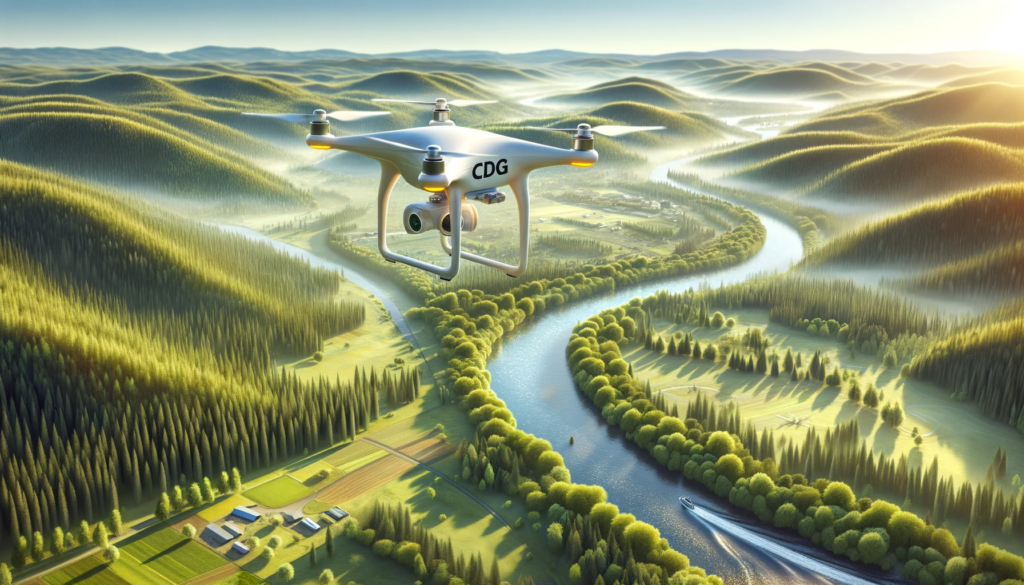Introduction
Desertification is one of the most pressing environmental challenges facing our planet today. Defined as the degradation of land in arid, semi-arid, and dry sub-humid areas resulting primarily from human activities and climatic variations, desertification poses a significant threat to biodiversity, water resources, and the livelihoods of millions of people. With the expansion of desert landscapes and the increase in severity of these conditions, it’s become imperative for technologies and methodologies to evolve to combat this ecological crisis effectively.
The Role of Drone Technology in Environmental Monitoring
In the quest to address and mitigate the effects of desertification, drone technology emerges as a beacon of innovation. Drones, or unmanned aerial vehicles (UAVs), equipped with advanced imaging and sensing technology, have revolutionized the way environmental monitoring is conducted. By providing high-resolution data from difficult-to-access areas without the need for human presence, drones not only reduce the costs and risks associated with traditional monitoring methods but also increase the frequency and accuracy of data collection.
CDG’s Drone Desertification Monitoring Inspections
At CDG, we specialize in leveraging drone technology to provide cutting-edge Desertification Monitoring Inspections. Our service is designed to offer comprehensive surveillance and analysis of affected areas, enabling more effective management and remediation strategies. Here’s a detailed look at how our drone inspections make a difference:
- Detailed Area Mapping
Our drones are equipped with high-resolution cameras and GIS technology that create detailed maps of vast lands affected by desertification. These maps are crucial for identifying affected areas and understanding the extent of degradation, which is essential for planning restoration projects. - Vegetation and Soil Analysis
Through multispectral imaging, our drones assess vegetation health and soil conditions. This imaging technique captures data not visible to the human eye, revealing insights into plant stress, soil moisture levels, and more. This information is vital for determining the health of the ecosystem and the effectiveness of ongoing land management strategies. - Monitoring Changes Over Time
Desertification is a dynamic process influenced by many variables, including climate change. Regular monitoring is essential to understand the progression and impact of desertification. Our drones make it feasible to conduct inspections regularly and consistently, providing time-series data that reveal trends and changes, enabling timely decision-making. - Accessibility and Safety
Drones can easily reach remote or hazardous areas that are otherwise inaccessible or dangerous for human surveyors. This capability is particularly beneficial in desert environments where extreme temperatures and unstable terrains can pose significant risks. - Cost-Effectiveness
Deploying drones for environmental monitoring reduces the need for extensive human labor and logistical planning. This not only cuts down on costs but also speeds up the data collection process, allowing for more frequent and extensive monitoring programs.
Impact of Our Drone Inspections on Combating Desertification
The implementation of drone technology in desertification monitoring by CDG has had profound impacts:
- Enhanced Environmental Management: With accurate, real-time data, environmental managers can implement more effective land use planning and conservation strategies.
- Informed Policy Making: The detailed reports and analyses provided by our drone inspections equip policymakers with the necessary information to draft targeted policies to combat desertification.
- Community Engagement: By sharing our findings through accessible reports and interactive maps, we help educate and involve local communities in sustainable practices and restoration efforts.
Future Prospects and Innovations
As drone technology continues to advance, CDG remains at the forefront of integrating new capabilities into our monitoring services. Future enhancements include the integration of AI and machine learning algorithms to predict potential desertification hotspots and automated drone fleets for continuous monitoring.
Conclusion: A Commitment to Sustainability
At CDG, our Drone Desertification Monitoring Inspections are more than just a service; they represent our commitment to combating desertification and promoting sustainable environmental practices. Through innovation, dedication, and collaboration, we continue to push the boundaries of what’s possible in ecological preservation and restoration.
For more information on how we can assist you in your environmental monitoring and management efforts, visit our website or contact our expert team. Together, we can forge a path towards a more sustainable and resilient future.
